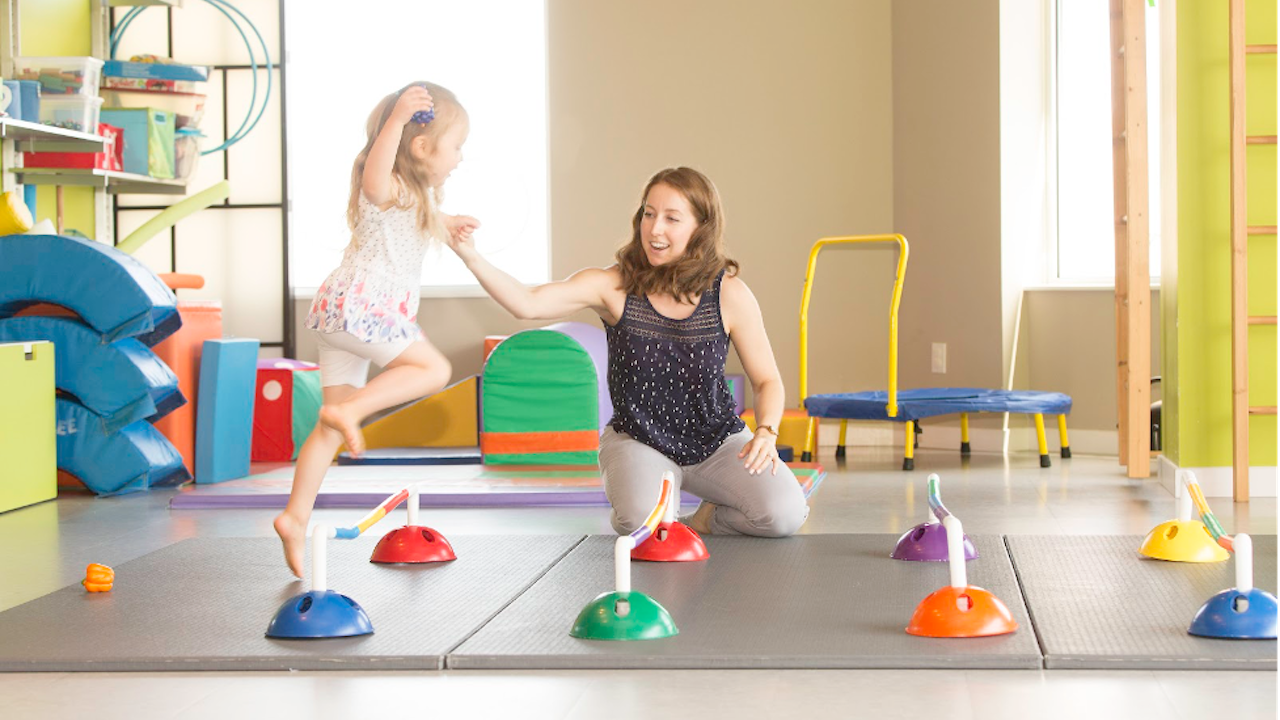From the expert: How to get little bodies ready for kindergarten
Aug 16, 2022
From our 2022 resident scholar and physiotherapist Jennifer Halfin of Toronto Kids Physio
For most children, the transition into kindergarten is such an exciting milestone! As parents, however, it’s often a time to reflect on our child’s development and ensure they are set up for success in a new year ahead—both mentally and physically.
Going into kindergarten often means transitioning to a larger school, which can bring new demands like bigger staircases and busier hallways. Add in a new playground and longer days, and you can quickly see how this can be a whole new experience for a young body learning how to find their way.
Just as some children may be at different academic levels before entering school, the same can be said for gross motor skills. Before kindergarten starts, there is much less structure and fewer expectations on kids. Some may have older siblings that they try to keep up with, or maybe they have been going to gymnastics classes since they were younger, so they already have excellent skills before going into kindergarten. However, not every child has these experiences or exposures; most importantly, every child develops differently. That means some kiddos may not have some of the foundational movement skills yet, which can make it more challenging for them to keep up with their peers.
Here are a few activities you can try with your child at home that will help to physically prepare them for some activities or movements that they may encounter at kindergarten.
During the period of four to six years of age, children are learning how to move their bodies and are working on three basic fundamental movements:
Stationary skills
Stationary skills are movement skills performed “on the spot” without travelling across the floor or surface. These include: balancing, bending, twisting and lifting.
For stationary skills at the entering kindergarten age range (i.e., four to six years of age), children should be able to stand on one foot for five to 10 seconds, which allows them to participate in games that involve kicking or “freeze”-type movements. Stationary skills also involve a lot of core strength, which they will also need to be able to sit up tall at their desks or in circle time for prolonged periods. To help progress their stationary skills, try creating a routine at home like brushing teeth where your child stands with one foot on a stool and the other on the floor—switching each foot in the morning and evening. They can also try standing on unstable surfaces (like pillows or couch cushions placed on the floor) to work on the core muscles.
Locomotion skills
Locomotion skills are movement skills that incorporate travelling across the floor or surface. These include: rolling, jumping, hopping, running and galloping.
For locomotion skills, children should be able to jump forward, up in the air, and down surfaces by the time they enter kindergarten, ensuring that they’re pushing off and landing with both feet at the same time. This takes lower body strength and coordination—both of which must be encouraged throughout play. To help progress these types of movements, try creating obstacle courses at home that incorporate multiple skills at a time or simply working on going up and down stairs. If these aren’t accessible to you due to space, having your child walk on inclines/ramps outdoors or couch cushions at home will help build the strength and coordination they need.
Manipulative (ball) skills
Manipulative movement skills involving controlling objects, such as balls, primarily with the hands or feet; may also involve racquets or bats. These include: bouncing, throwing, catching, kicking and striking.
Children should be able to throw and catch smaller items and kick balls with good contact and at targets. If your child has trouble catching a ball, try playing catch with larger stuffed animals, focusing on hugging the stuffy into their chest. Once they’ve mastered catching larger items, you can make the items smaller and start having them “toss” them into laundry baskets to focus on targeting and hand-eye coordination.
No matter where a child’s skills are compared to their peers, each child is on their own trajectory. Typically, as long as they’re making gains every two to four weeks (e.g., playing outside longer, not getting as fatigued or building confidence to want to try new activities), then they are making significant progress! The best way to support your child and their development is to get outside and be active or try a few of these activities at home. If you notice differences between your child and their peers, or if you are curious about development, foot positioning, skills, posture, or just want to improve your child’s confidence, paediatric physiotherapists (like the ones at Toronto Kids Physio) are a great option to help them have fun—all while getting them stronger!
Stay connected with news and updates!
Join our mailing list to receive the latest news and updates from our team.
Don't worry, your information will not be shared.
We hate SPAM. We will never sell your information, for any reason.


